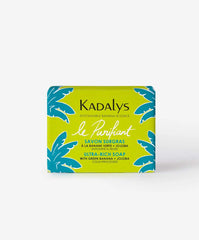
Deciphering skin pH: the foundations of an effective skincare routine
The health and beauty of our skin are major concerns in our quest for overall well-being. But did you know that skin pH plays a crucial role in the balance and vitality of our skin? This often overlooked indicator is of paramount importance in our skincare routines. In this article, we invite you to dive into the world of skin pH and discover the foundations of an effective skincare routine focused on pH balance. Whether you are passionate about natural cosmetics or simply looking for advice for radiant skin, this analysis will reveal the keys to an effective and pH-friendly skincare routine. Ready to dive into the depths of your skin and reveal all its radiance? So, let's embark now on this captivating journey to discover skin pH and its well-kept secrets.
SUMMARY
- Understanding everything about skin pH
- The consequences of a skin imbalance
- Identify your skin type and ideal pH
Understanding everything about skin pH
When we talk about skin care, we have often heard about skin pH. But what does this actually mean? Skin pH refers to the level of acidity or alkalinity in our skin. It is measured on a scale of 0 to 14, where 7 is considered neutral. A pH below 7 is acidic, while a pH above 7 is alkaline.
Skin pH plays an essential role in the balance of our skin. Indeed, healthy skin has a slightly acidic pH, generally between 4.5 and 5.5. This slightly acidic pH helps maintain the integrity of the skin barrier, which is crucial for the health of our skin.
Many factors can influence skin pH. The environment in which we live, our daily hygiene and even our diet can have an impact. For example, excessive exposure to hot water or the use of harsh cleaning products can also cause disruption.
The consequences of a skin imbalance
To go into a little more scientific detail, know that the skin barrier , made up of cells and lipids, plays an essential role in protecting our skin against external aggressions. When the skin's pH is balanced, this barrier functions optimally, limiting moisture loss and preventing irritants and bacteria from penetrating the skin.
However, an imbalance in skin pH can weaken this protective barrier , which can lead to various skin problems, thereby impacting the health and beauty of our skin. Indeed, when the skin's pH is disrupted and becomes too alkaline , the skin barrier can be damaged, which can lead to excessive dryness of the skin. Dry skin tends to be rough, uncomfortable and prone to irritation, tightness, itching and cracking. Additionally, an unbalanced skin pH can also lead to increased skin sensitivity , making the skin more reactive to external stressors. The weakened skin barrier then loses its ability to retain moisture, which causes a loss of hydration essential to skin health.
Besides sensitivity and dryness, an unbalanced skin pH can also promote the appearance of blemishes . When the pH is too acidic, the skin becomes more vulnerable to bacterial infections, inflammation, and breakouts such as acne . Excess acidity can lead to overproduction of sebum, clogging pores and encouraging the proliferation of bacteria responsible for skin imperfections.
Identify your skin type and ideal pH
It is therefore essential to maintain a balanced skin pH to preserve the health and beauty of our skin. To achieve this, it is important to understand our skin type and its ideal pH. Each individual has a unique skin type , with their own characteristics and concerns and therefore requires appropriate care . There are different classifications of skin types, including normal, dry, oily and combination skin. Understanding your skin type will help you find the right balance and take care of it appropriately. If you still have doubts about the nature of your skin, we recommend that you go to the “ Diagnosis ” section of our site to perform the test and obtain your skin results directly.
For example, normal skin is balanced and has an ideal pH level, while dry skin may be prone to dryness and dehydration. Oily skin, on the other hand, tends to produce excess sebum and tends to have a slightly acidic pH, while combination skin has areas that tend to be oily and others that are drier.
Once you have identified your skin type, it is important to choose ph-friendly products, that is to say, which respect the natural pH of your skin. These gentle and balanced products will help preserve the integrity of the skin barrier and maintain optimal pH, thus promoting healthy, vibrant skin. In addition to selecting suitable products, it is also essential to adopt a proper skincare routine. This includes cleaning the skin with gentle, non-irritating products as well as daily hydration.











